PR backlinks are earned through media coverage – news stories, expert commentary, original research, or product announcements. Unlike standard SEO links, which can often be placed using templates or automated outreach, PR links require real content, strategic timing, and meaningful media engagement.
Search engines evaluate the origin of backlinks, and links from trusted media outlets contribute to a website's authority, reputation, and visibility in search results. PR backlinks aren't scalable in the same way as SEO links, but when executed strategically, they offer long-term, high-quality growth.
In this article, we'll break down what PR backlinks are, how to get high PR backlinks, why they matter for SEO and branding, and what types of content generate them.
What Are PR Backlinks and Why Do They Matter?
Definition of PR Backlinks
PR backlinks are editorial links placed naturally within trusted content, such as:
- News articles and media stories
- Op-eds and guest columns
- Analytical features or research pieces
- Respected, authoritative blogs
These press links are earned in the context of a genuine news hook, such as a product launch, an industry study, or an expert quote. They're seamlessly integrated into the content, making them feel organic and not like a promotional insert.
Where PR Backlinks Come From
Most often, high PR backlinks come from websites that users and search engines already trust:
- Industry publications
- Well-known media platforms
- Credible expert-driven blogs
Links from such sources don't just carry SEO value – they serve as a signal to search engines that your brand or project is part of a broader, relevant conversation.
People often confuse PR links with standard SEO backlinks, but they serve different purposes. Traditional link building focuses on increasing backlink volume, frequently using keyword-rich anchor text that is placed through outreach or paid placements. These links are typically embedded in pre-optimised content that has been written with search intent in mind.
PR link building, on the other hand, is context-driven. The backlink appears as a result of genuine editorial interest and is embedded in content that holds value on its own, not just as a means to drive SEO. The main goal here isn't simply to pass link juice, but to highlight a brand's presence in relevant media narratives. A successful backlink campaign often begins with the question: How to obtain backlinks from best PR websites? – and the answer lies in a solid PR strategy.
It's also important not to confuse PR backlinks with Digital PR. Digital PR is a broader approach that encompasses campaigns centred on online storytelling, including press releases, special reports, data-driven studies, and native content, distributed across multiple media channels. A digital PR link-building effort may result in backlinks, but the backlink itself is just a byproduct, not the method.
Comparison: PR Backlinks vs SEO Links vs Digital PR
| Characteristic | PR Backlinks | SEO Links (Traditional Link Building) | Digital PR |
|---|---|---|---|
| Goal | Earn mentions in meaningful editorial context, build brand authority | Increase backlink volume to improve search rankings | Generate buzz, create media exposure, and achieve PR impact through digital storytelling |
| How They're Earned | Result of news hooks – expert quotes, press releases, original research | Purchased or placed based on specific SEO requirements | Through creative campaigns, data studies, and special media projects |
| Content Format | Natural mention within an editorial piece | Optimized content with or without keyword anchors | Any format – articles, visuals, viral content, branded assets |
| Source of Links | Reputable media outlets, industry blogs, trusted PR websites | Link farms, private blogs, PBNs, or lower-quality sites | A mix of media: online publications, influencers, podcasts, social media, blogs, etc. |
| Anchor Text | Usually unanchored or branded mentions | Often keyword-rich anchor text (e.g. “best SEO tools”) | Varies by format; links may be included, but are not always the focus |
| SEO Value | High – contributes to trust, authority (E-E-A-T), domain rating, brand signals | Direct SEO impact – improves PageRank, anchor text diversity, and scalability | Indirect – builds awareness, brand mentions, potential for natural high PR backlinks |
| Contextual Relevance | Naturally integrated, adds value for the reader | Often feels artificially inserted into the content | Content is PR-driven, sometimes not SEO-focused |
| Control Over Placement | Partially controllable – via PR agencies, journalist outreach, expert input | Fully controllable – every element is predefined | Partially controllable – outcomes depend on creativity, media interest, and campaign quality |
Example of a PR Backlink
When Archive raised $30 million in funding, the story was covered by TechCrunch .
This is a textbook example of a press link driven by a genuine news event – a significant investment round that sparked media interest. The article discusses the company's product, includes quotes from the founders, and – crucially – features a dofollow PR backlink to the brand's website, naturally embedded in the editorial content.
This is what a high-PR backlink looks like: it wasn't placed for SEO purposes or purchased, but earned through relevance, timing, and genuine media interest. It reflects the brand's involvement in the broader industry narrative.
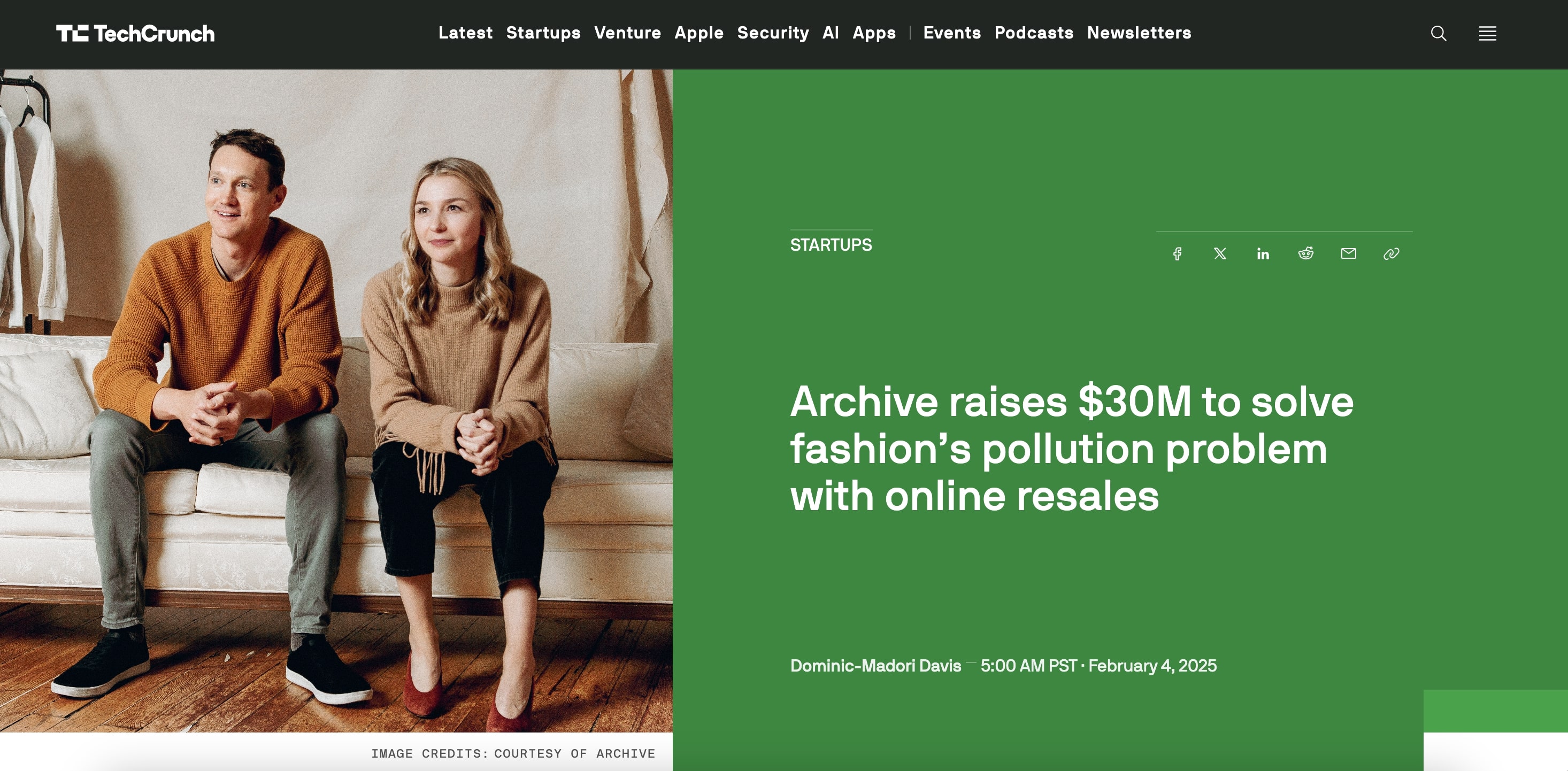
That single campaign generated over 100 backlinks from nearly 70 referring domains – a powerful example of effective PR link building.

In contrast, a typical SEO backlink is placed based on a pre-written brief, often via link marketplaces or in guest posts with commercial anchor text – for example: "buy high pr backlinks for your business."
Example of an SEO Backlink
Take a look at this example from Entrepreneur.com , where a link to PR Newswire appears in a guide about link building. The hyperlink is placed directly in the content with no clear editorial or news-driven reason.
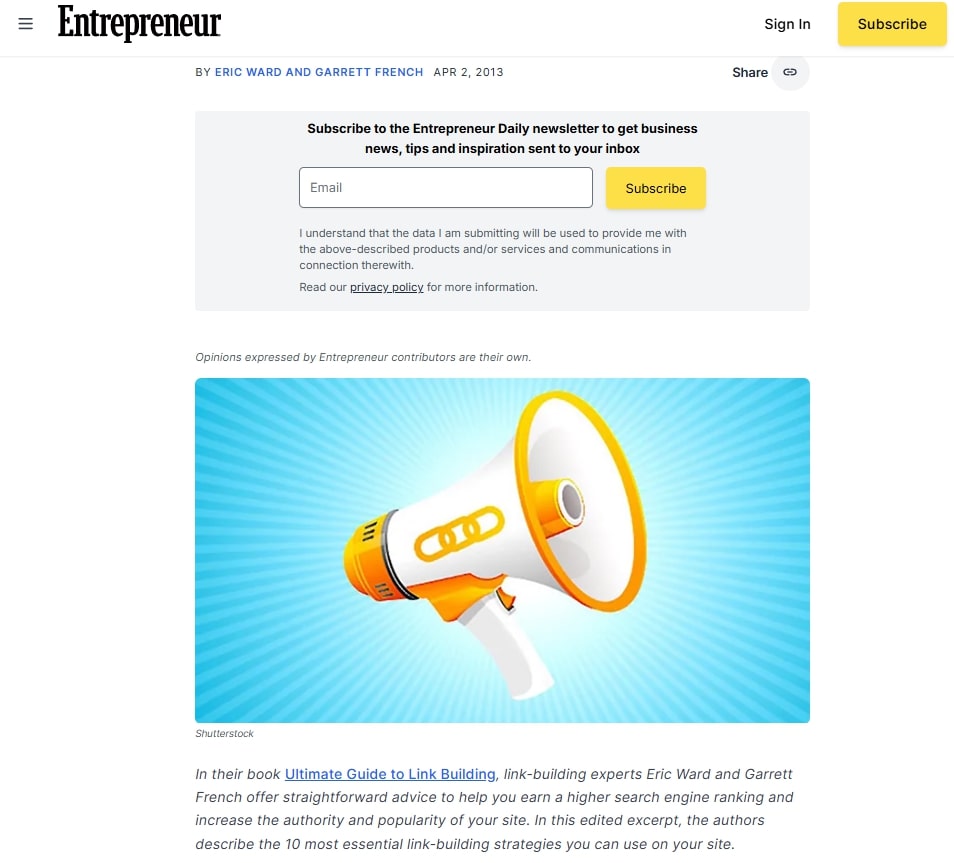
This is a clear SEO link : it appears in a promotional or how-to article without a news hook, it's dofollow, and the goal is to transfer link equity to the target page, not to support the story or add journalistic value.
This campaign also resulted in over 90 backlinks from nearly 60 domains, showing that while SEO-focused backlink services can scale, they often lack the authority and editorial trust that come from true press release backlinks.

Why PR Backlinks Matter for SEO
PR backlinks contribute to SEO through a compound effect, which is exactly why PR link building is becoming one of the most powerful strategies in modern search marketing.
- They build trust and credibility for your site
- They pass link equity from high-authority domains
- They signal expertise and reliability to search engines
Let's take a closer look at why high PR backlinks are so impactful:
- E-E-A-T and Topical Authority
The concept of E-E-A-T – Experience, Expertise, Authoritativeness, and Trustworthiness – is a key component of Google's quality guidelines. It's especially critical in niches like healthcare, finance, or safety, where trust is non-negotiable.
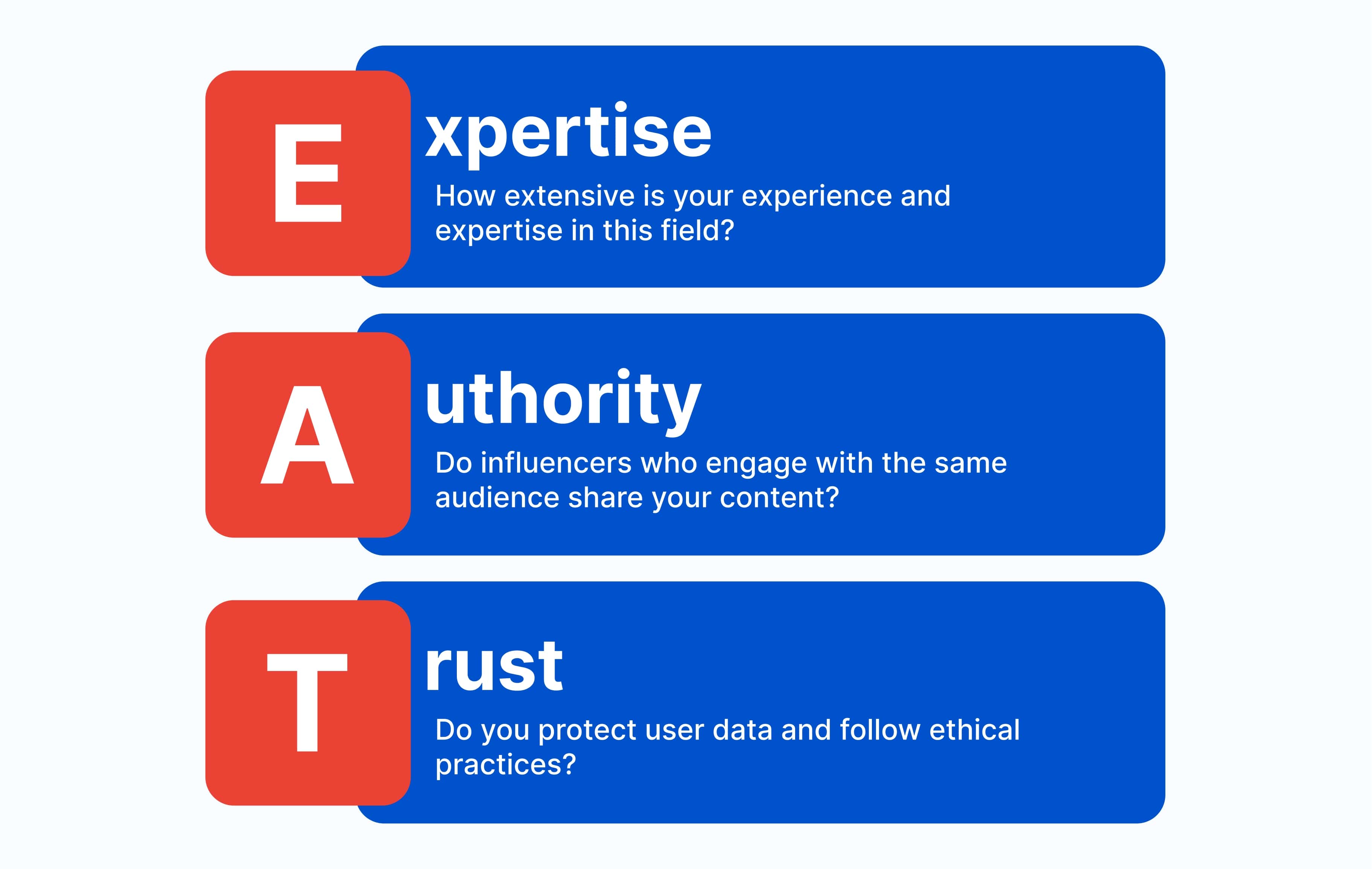
To rank well in these areas, it's not enough for a site to be technically optimized, it must be trusted. This is where PR backlinks truly shine.
When your site is cited in expert interviews, research publications, or authoritative news articles, it signals to Google that credible sources are recognizing your brand. These press links serve as indirect proof that your content is expert-backed and respected in your field.
While E-E-A-T itself isn't a direct ranking factor, search engines use proxy signals, such as behavioural metrics, author transparency, and press release backlinks from trusted media to evaluate content quality. That's how PR sites and press mentions can significantly improve your rankings.
- Boosting Domain Rating and Search Engine Trust
Domain Rating (DR) or Domain Authority is a metric that reflects the strength of your backlink profile. Although it's a third-party measurement (from tools like Ahrefs or Moz), DR correlates closely with a site's actual ability to rank.
Earning backlinks from high DR media sites helps increase your domain's credibility, not just because of link volume, but because these backlinks represent editorial trust. Unlike links from directories or link farms, PR links show that your brand is being referenced in legitimate informational content.
To maximise impact, focus on:
- The authority of the referring domain
- The natural placement of the link
- The absence of manipulative tactics (like PBNs or spammy outreach)
Even a few well-placed high PR links can unlock search visibility and boost trust, especially in competitive markets.
- Driving Qualified Traffic and Building a Brand
SEO isn't just about rankings – it's about attracting the right audience.
A PR backlink placed in an article that people read can bring highly relevant traffic to your site. These visitors arrive with intent, often already interested in your product or topic. Unlike paid placements or mass-produced guest posts, PR backlinks drive real engagement.
These visitors:
- Spend more time on your site
- Explore multiple pages
- They are more likely to convert into leads, subscribers, or customers
Additionally, regular mentions in authoritative media help build brand recognition. The more your company is quoted, cited, or linked on PR news sites and professional platforms, the more visible and reputable you become.
As your business grows, low-effort SEO tactics become less effective. That's when digital PR for link building becomes one of the few sustainable strategies that can do it all – improve rankings, drive traffic, and enhance your brand's reputation.
Types of PR Backlinks and How to Earn Them
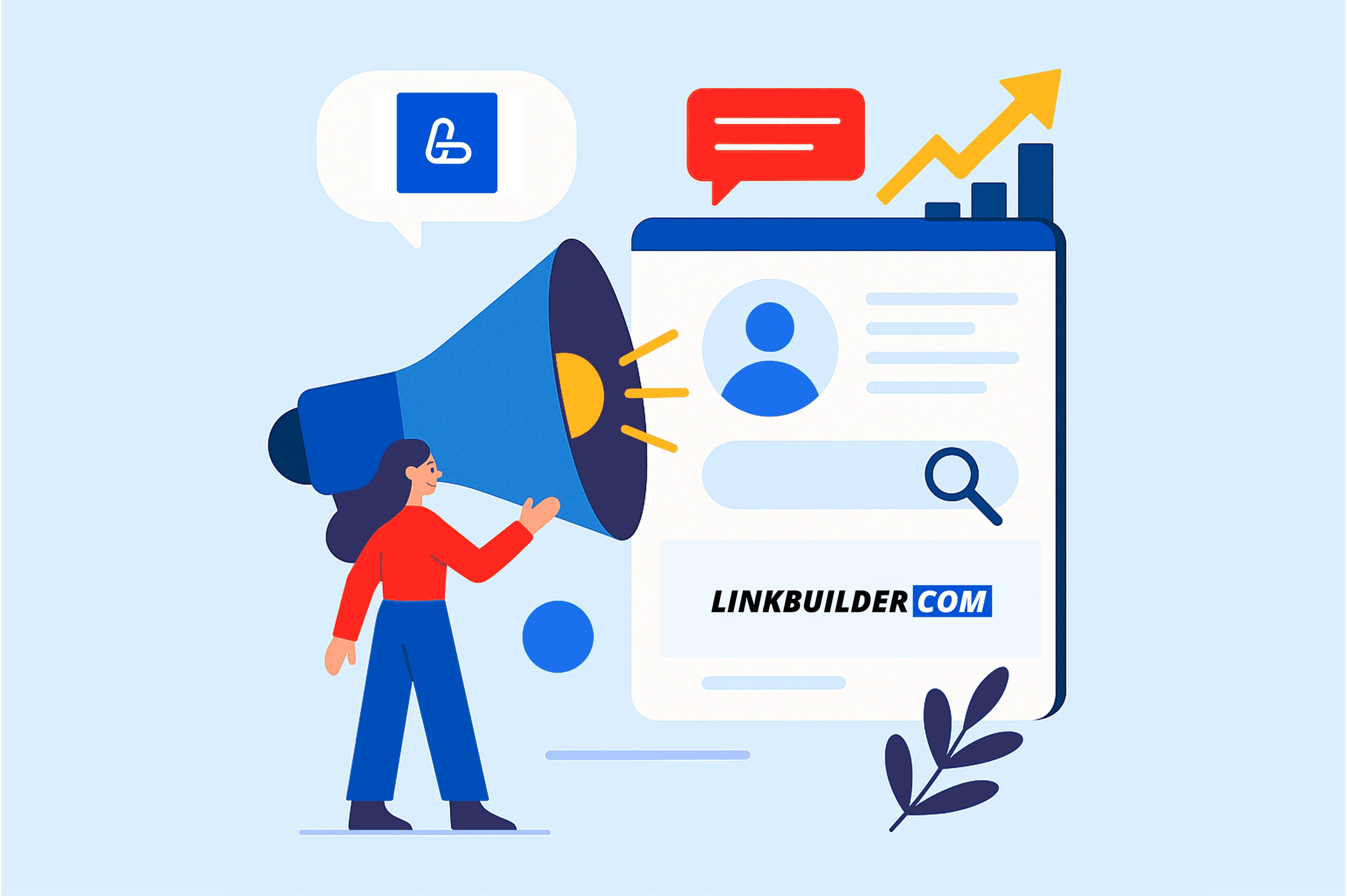
Traditional Press Release
A press release remains one of the most straightforward and reliable ways to obtain backlinks from media outlets. It's a short, official announcement about something newsworthy, such as a product launch, a partnership, a research finding, or company milestones.
Knowing how to write a press release for SEO is crucial, as the structure and clarity of the content significantly affect your chances of getting published and earning a high PR link.
Here's a basic structure to follow:
- Headline – Clear, concise, and free of clickbait. It should immediately communicate the core of the news.
- Lead Paragraph – Answers the "who, what, when, where, and why" questions. This section needs to hook both editors and readers.
- Body – You may include relevant keywords, but avoid keyword stuffing. Focus on clarity.
- Quote – A statement from a company representative or industry expert. This increases the likelihood that your release will be picked up.
- Boilerplate/About Section – A short paragraph about your company. This is where most PR backlinks are placed – ideally with branded anchor text or a natural phrase like “learn more.”
Avoid overly promotional or keyword-heavy anchors like "cheap soil in Texas". These look spammy to editors and may result in rejection. Instead, use your brand name or neutral CTAs. Press release links work best when they feel natural and editorial, not forced.
Where to Distribute Press Releases
There are different types of platforms you can use to distribute press releases, depending on your SEO goals and audience reach. Here are some of the most effective ones for digital PR for link building :
- Press Release Distribution Services – These platforms syndicate your release to multiple media outlets. They're helpful for a broad reach, though not all will land you on high-authority domains.
- News Aggregators – Sites where you can directly publish your press release. These pages get indexed quickly and can help with initial visibility.
- Industry-Specific Platforms – Niche media or blogs where your press release can generate both relevant backlinks and targeted traffic from interested readers.
Comparison of Popular English-Language Press Release Platforms
| Platform | Description & Target Audience | Comments |
|---|---|---|
| PRLog.org | Free international platform offering press release publishing with live backlinks | Excellent for basic press release link building and SEO visibility |
| 24-7pressrelease.com | Paid and free options; wide media distribution including Google News | Solid reach, useful for U.S. businesses targeting national media |
| PR.com | Offers detailed company profiles and SEO-friendly press releases | Good for long-term branding and acquiring high PR backlinks |
| EinPresswire.com | Syndicates to major media outlets; includes images and dofollow links | Affordable option for professional distribution with SEO in mind |
| IssueWire.com | Focuses on startups and small businesses; includes backlinks and social sharing | Ideal for startups looking to gain exposure and press links |
| NewswireToday.com | Targeted distribution to niche industries and B2B press | Best for reaching industry-specific audiences with relevant PR websites |
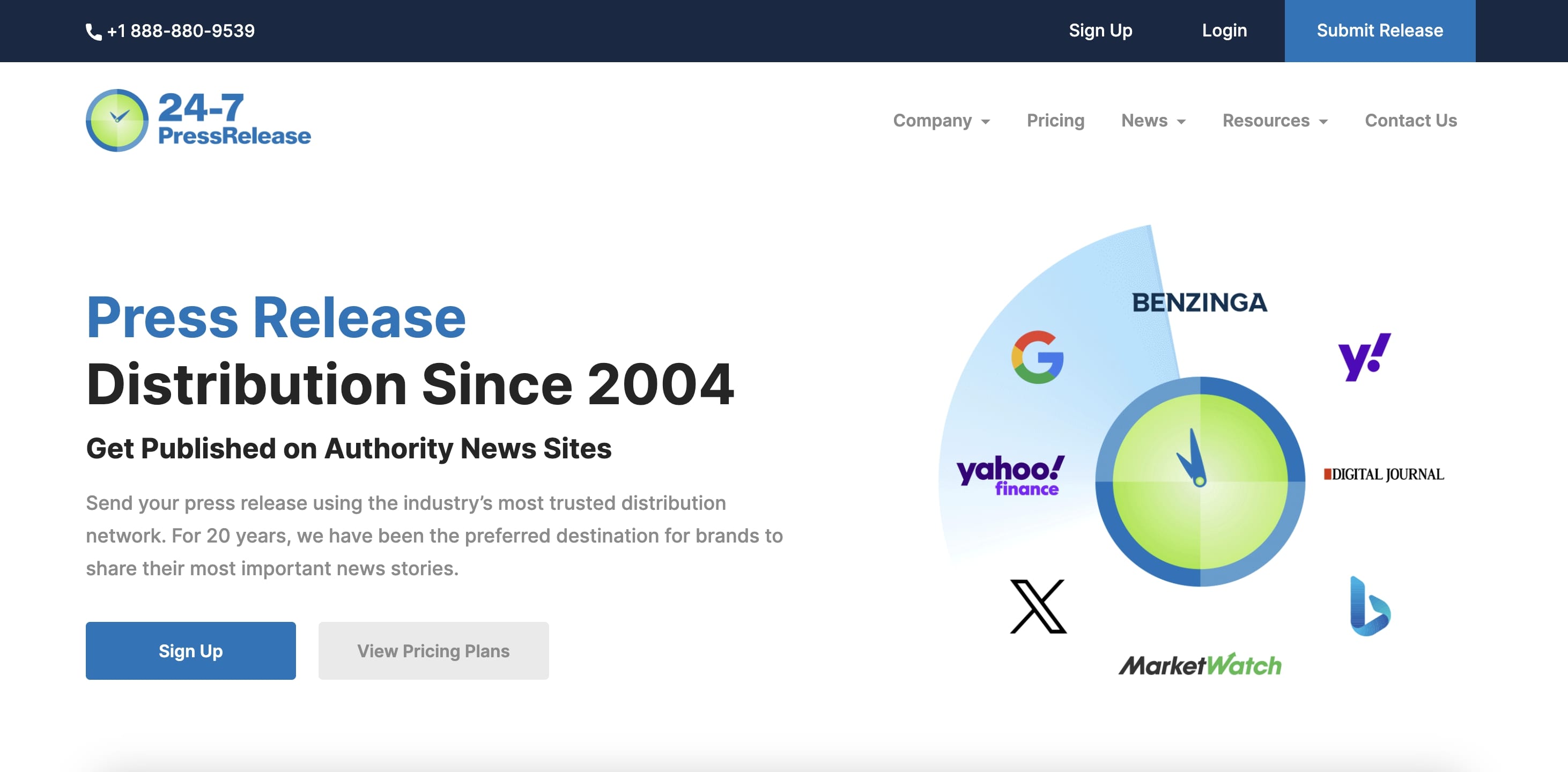
What Is Digital PR and How Does It Differ From Traditional PR
Digital PR focuses on online publications and media, rather than traditional outlets such as print newspapers, television, or live events. It's especially effective for digital PR link building through niche blogs and industry-specific news sites, allowing you to reach audiences already interested in your topic. Unlike traditional PR, which emphasizes broad media coverage and offline presence, digital PR focuses on engaging with web-based media, influencers, social platforms, and digital newsrooms.
How to Start a Digital PR Campaign
- Identify Which Media Outlets You Want PR Backlinks From
- Don't start with the story, start with your target platforms. These might include business publications, trade media, or niche blogs. Study the topics they cover, the people they quote, and how they structure their content. If a site never includes external links, it may not be worth your effort for pr link building.
- Create a Newsworthy Angle That Editors Will Care About
- Think from the editor's perspective. What's worth turning into a story? Some strong formats include:
- Unique insights (surveys, studies, internal data).
- An unusual case study.
- A timely trend or challenge that you can speak to.
- A helpful tool list where your product fits naturally.
- Prepare Clear, Ready-to-Use Content
- Whether it's a press release, a draft article, or a PDF with data points, make it easy for journalists to work with. Highlight the sentence or paragraph where a press link would naturally belong. This improves your chances of earning high PR backlinks.
- Find Direct Contact Information for Journalists and Editors
- Use media databases, LinkedIn, Telegram channels, or bylines on articles to find the right people. We'll explore how to pitch journalists for pr backlinks later in this article. Avoid generic emails – personalised outreach to the right contact can dramatically increase your chances of getting noticed.
- Send Personalised Pitches, Not Mass Emails
- Your message should be concise, relevant, and tailored to each outlet. Don't force a backlink – be open to adjusting the format to match the publication's needs. Editors are far more likely to engage with helpful contributors, rather than those who are pushy.
- Track Mentions and Monitor Link Types
- Use tools like Google Alerts, Ahrefs, or Mention to see when your content is published. Sometimes, your link will be included without notice; other times, your name will appear with no backlink. In such cases, a polite follow-up asking to add a source link can often be effective.
While digital PR requires more time and strategic effort than automated press release distribution, the reward is worth it: authentic, editorially placed high-PR links that improve both your SEO and your brand reputation. If your goal is to earn a backlink from a reputable outlet, your approach should be editorial rather than promotional. The success of digital PR for link building lies in offering valuable content that helps journalists do their job, not in buying your way into coverage.
If you don't have the time or resources to run a campaign in-house, consider working with a professional backlink agency. The team at LinkBuilder.com offers end-to-end digital PR services, from writing and placing PR articles on best pr websites to backlink strategy and anchor text optimisation.
Reactive PR: Tapping Into Existing Media Buzz
Reactive PR is all about inserting your voice into ongoing conversations. Unlike traditional press releases, where you initiate the story, here, the goal is to respond quickly to relevant news and offer expert commentary, supporting data, or an interesting case.
It's one of the most efficient ways to acquire backlinks from high-PR sites without running a full-scale campaign. The key? Speed, relevance, and quality. Journalists often look for credible sources, but they won't wait around. You need to be on top of the news cycle and ready to contribute.
How to Catch Opportunities and Build Relationships With Journalists
- Use News Monitoring Tools. Set up alerts using platforms like Google Alerts or Talkwalker with keywords relevant to your niche. Follow your industry media, Telegram groups, and journalists' LinkedIn feeds for emerging stories.
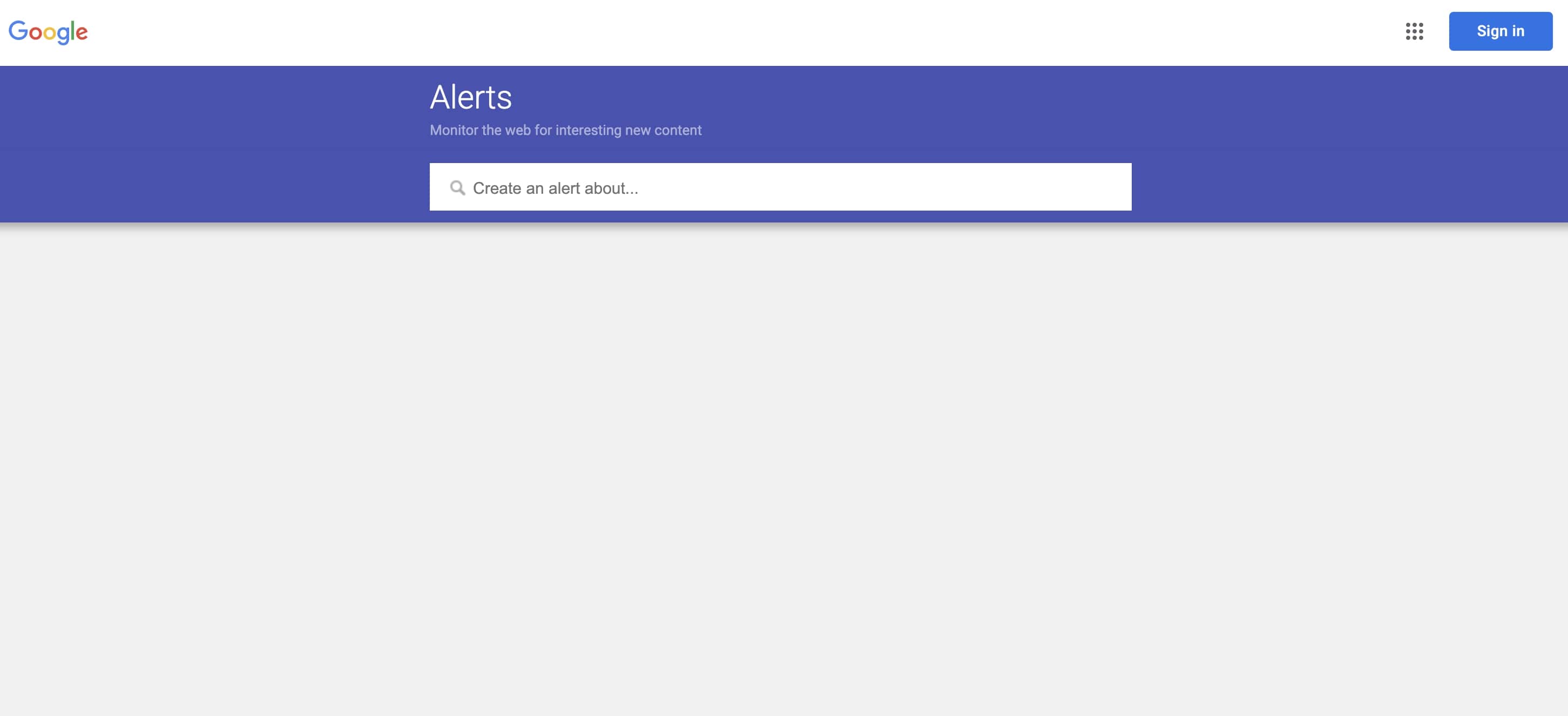
- Stick to Topics Where You Have Real Expertise
- Avoid commenting on every trend. Staying focused improves your chances of being quoted and helps build long-term authority in the eyes of editors.
- Prepare Short Profiles and Fact Sheets in Advance
- Journalists are often under tight deadlines. If you say, “Happy to comment,” you should already have a ready-to-use quote. It's also helpful to keep a short bio about yourself and your company on hand.
- Build Direct, Respectful Relationships With Journalists
- One great collaboration can lead to more. Be professional and helpful, never pushy. Instead of explicitly asking for a pr backlink, show how your input adds value. If your quote is firm, chances are your press link will be included without you having to request it.
HARO and Responding to Journalists
What Is HARO (Help a Reporter Out)?
HARO is a platform where journalists post requests for expert quotes and insights for their upcoming articles. In response, professionals, entrepreneurs, and subject-matter experts can submit commentary, often earning a high PR backlink when their input is featured. It's one of the most practical and accessible ways to get PR backlinks from top-tier media outlets.
Requests span a wide range of topics: business, finance, tech, marketing, health, and lifestyle. If you respond quickly and provide valuable input, you can land a PR link from major publications like Forbes, Business Insider, or TechCrunch. HARO remains one of the few reliable channels for earning editorial backlinks from high PR sites without paying for placement.
How to Write a HARO Pitch That Earns a Link
- Focus Only on Relevant Queries
Stick to topics where you have genuine expertise. Irrelevant or generic responses are the fastest way to get ignored. Targeted, insightful contributions are far more likely to result in a press link.
- Get Straight to the Point
Your pitch should be 3–5 sentences, directly answering the journalist's question. Skip introductions, thank-you notes, and restating the query. Your quote should be publication-ready, clear, and valuable.
- Include Your Name, Title, and Preferred Link
Make it clear who you're representing and where you want the backlink to point – this could be your homepage, an expert bio, or your company's site. This is a crucial part of effective PR link building, especially if you understand how editors typically incorporate links into their stories.
- Respond Fast
HARO moves quickly. Many opportunities close within hours of being posted. To stay competitive, check the HARO feed at least twice daily – or delegate it to someone on your team. Speed is one of the most important factors in getting high PR links through this channel.
- Track Your Mentions and Backlinks
Use Google Alerts, Ahrefs, or similar tools to monitor when and where you're mentioned. Links are sometimes added without notification. If your quote is included but the backlink is missing, you can politely follow up and ask whether a source link can be added.
Want to Learn More About HARO and SEO?
If you're interested in a deep dive into how HARO fits into a successful backlink campaign, check out this guide: How to Attract High-Quality Backlinks Using HARO .
And if you don't have the time to manage HARO submissions yourself, you can outsource the process to LinkBuilder.com .
We typically run a HARO campaign over three months: crafting expert responses, liaising with journalists, and securing placements on trusted pr news sites. You simply add $3000 to your project balance, and you're only charged for successful placements.
The end result? Not just backlinks, but editorial mentions in top-tier media that drive SEO performance, enhance brand reputation, and build long-term trust with your audience.
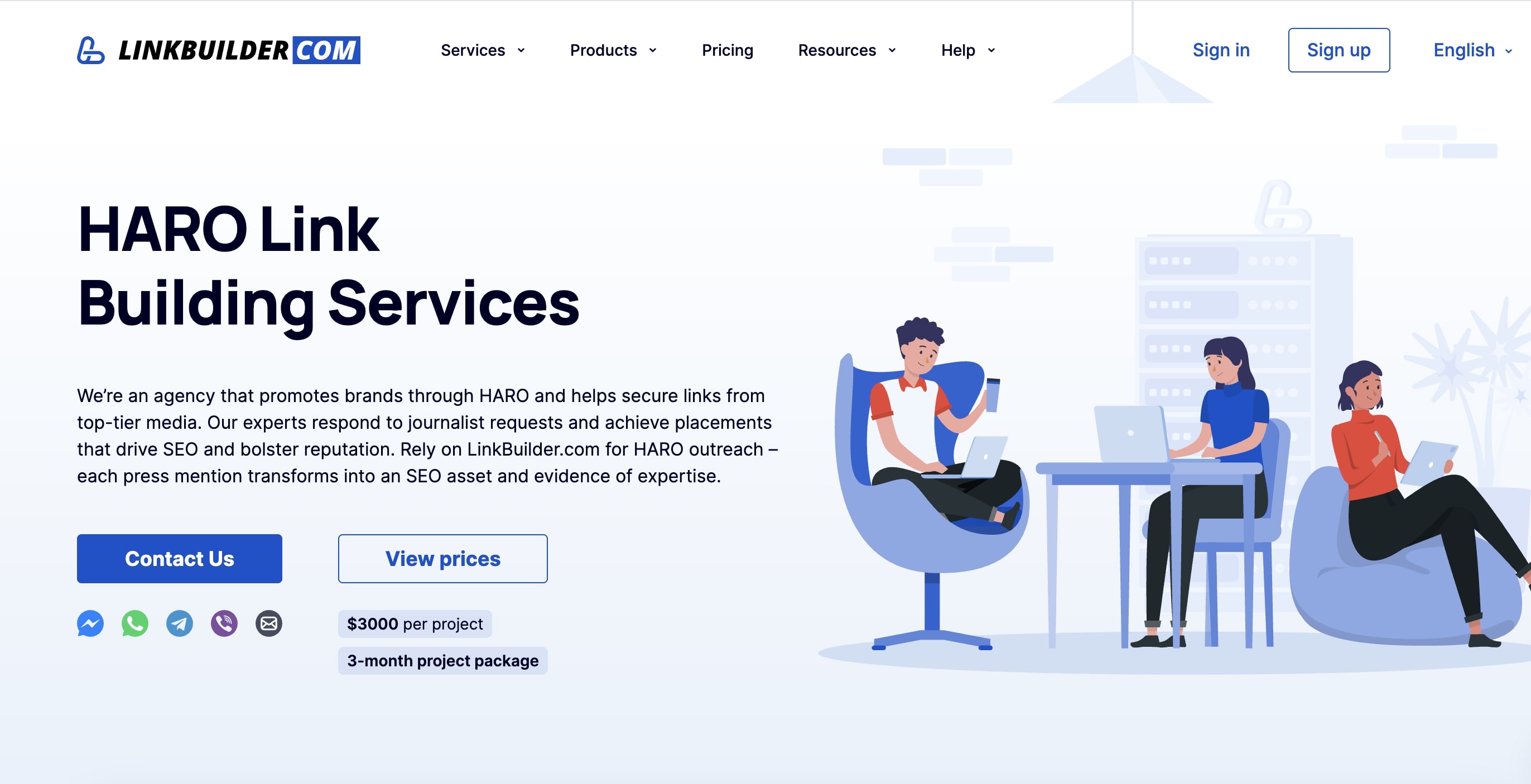
Guest Posts vs. Editorial Mentions: Where PR Backlinks Come From
Guest Blogging vs. PR Backlinks
Guest blogging is a well-known strategy in link building where you publish an article on an external website under your name or on behalf of your company. When done right, especially when the post meets editorial standards, it can be part of a digital PR link building campaign. In this format, you maintain control over the text, link placement, anchor text, and overall tone. Typically, your backlink is embedded within the body of the article. This method is widely used in SEO.
PR backlinks, on the other hand, are earned when your company is mentioned in an article created by a journalist or editor, not by you. You're cited as a source of information rather than the author. That's a key difference: PR links are perceived as part of a publication's editorial content, not as marketing or sponsored material.
Here's a breakdown of how the two approaches differ:
| Criteria | Guest Blogging | PR Backlinks |
|---|---|---|
| Initiator | Brand, SEO agency, or marketer | Journalist or editorial team |
| Content Type | Guest article, opinion piece, expert column | News story, analysis, research, editorial roundup |
| Author | You or your company's representative | The publication, quoting your input |
| Link Control | Full (placement, anchor, format) | Limited or none |
| Goal | SEO, traffic, brand visibility | Reputation, authority, E-E-A-T value |
| Perception by Search Engines | Controlled or semi-natural | Editorially earned (natural backlink) |
| Typical Platforms | Blogs, partner sites, informal publications | Reputable media outlets, news sites |
When Guest Posting Becomes PR Link Building
The line between guest blogging and PR backlinks isn't always clear-cut. A guest post can serve as PR link building if:
- It's published on a reputable media site (e.g. Inc., Entrepreneur, Fast Company).
- The author is positioned as a subject-matter expert, not a marketer.
- The content is created for the publication's readers, not for keyword stuffing.
- The backlink is placed naturally, within relevant context, without over-optimized anchor text.
In these cases, your contribution is viewed as expert commentary rather than self-promotion, and the link gains more authority as a result. This is particularly useful in press release backlinks or high PR backlink strategies where trust and expertise are essential.
Examples:
- You publish a thought leadership piece on Entrepreneur.com, and within the article, you mention your product as one possible solution to a broader industry issue – this is a PR backlink.
- You write a guest post for a SaaS partner's blog and include a link to your product page in a “Learn more” section – that's more of a standard SEO link.
- A journalist from Inc.com invites you to contribute a column on industry trends, and your website is linked inside your expert commentary – this is PR link building in action.
How to Get PR Backlinks: A Step-by-Step Process
- Research Your Media Niche and Target Publications
Before you start pitching journalists or offering content, you need a clear understanding of which media outlets you actually want a PR backlink from, and which ones even allow backlinks in the first place. This is the foundation of any PR link building campaign and the first step for anyone trying to figure out how to get backlinks from high PR sites.
Start by analyzing your niche:
- Who regularly covers your topic?
- Which outlets mention your competitors?
- Where do real dofollow links appear–and where are they usually removed?
- Which journalists publish reviews, commentary, or industry insights?
Use tools like Ahrefs, SimilarWeb, Media Bias/Fact Check, or even manual research through Google News and competitor backlink profiles.

Here's a simplified breakdown of typical outlet categories and what you can expect from them:
Examples Domain Rating / Authority Link Type Notes Forbes , Inc. , Entrepreneur 80–90+ Usually NoFollow Require strong editorial pitches, often exclusive TechCrunch , Mashable , ReadWrite 70–85 Mix of DoFollow/NoFollow Potential for press release backlinks or expert columns The Verge , WIRED , Fast Company 80+ Mostly NoFollow Occasionally include links in interviews and roundups Medium (via publications), Hackernoon , Smashing Magazine 70–90 Often DoFollow Open formats, contributor-friendly, but still curated Focus your efforts on media outlets that:
- Regularly cover your niche or industry.
- Allow external links in their content.
- Are perceived as trustworthy and authoritative by your target audience.
- Create Content Journalists Actually Want (Press Releases, Research, and Data)
If you want a publication to include your link, you'll need a strong editorial hook – something compelling enough for a journalist or editor to work with. In most cases, this means preparing one of the following:
- A press release tied to a real newsworthy event: a product launch, partnership, funding round, or survey results.
- An original study or research report : industry insights, consumer trends, internal data, or market statistics.
- Data-led content : charts, rankings, interactive tables, or visualizations based on proprietary or public datasets.
This type of content greatly increases your chances of earning high PR backlinks, especially when it's professionally packaged and includes ready-to-use quotes, clear insights, and expert commentary. It's one of the most reliable ways to get press release backlinks from credible publications.
Data-Led Content
Journalists love referencing concrete, data-driven sources. If you've collected unique stats or analysis, publish them as a report, blog post, or resource hub, ideally with charts, graphs, and takeaways. Make things easy for the editorial team:
- Use clear headlines.
- Highlight the most newsworthy insights.
- Include expert quotes or context.
Well-structured data-led content not only attracts press links but can also become a consistent source of high PR backlinks over time as others reference your findings.
SEO-Focused Press Release Checklist
Want to get featured in the media and gain a link that supports your SEO strategy? Here's what to double-check before sending out your press release:

This kind of content combines the goals of a press release with the mechanics of SEO, and that's exactly what editors value. A great story is only half the equation. The other half is smart distribution, which we'll cover in the next section.
- Personalized Journalist Outreach
Even the best content won't earn a backlink if it doesn't land in front of the right journalist. If you're trying to figure out how to get backlinks from high PR sites without paid placements , personalized outreach is the key. Rather than sending the same message to dozens of people, identify the right journalist for each pitch, and provide relevant, timely information for their beat.
Avoid mass emailing press releases. Instead:
- Briefly introduce yourself and explain why you're reaching out to this specific journalist.
- Include one or two pre-written expert quotes related to the topic.
- Provide a direct link to your press release, research, or landing page.
- Avoid sensational subject lines, urgency flags like “URGENT,” and copy-paste templates.
Example of a Good Email Intro:
Hi [Name],
I saw your recent piece on [Topic] and wanted to share an update we've published that could be a good fit for commentary or follow-up coverage.Tailoring your message to the journalist's area of interest increases the chances of getting high pr backlinks through organic coverage, not just promotional content.
- Follow-Up and Building Media Relationships
Reaching out once isn't always enough. Following up, politely and professionally. It is a crucial part of any PR backlink campaign. Journalists receive dozens of pitches every week, and reminders can often surface good stories that got buried in their inboxes.
When to Send a Follow-Up
- If you haven't heard back after 2-4 business days.
- If you have new insights or data that strengthen your pitch.
- If a similar story was recently published (e.g., by a competitor), making your piece more relevant.
Example Follow-Up Message:
Hi [Name],
Just checking in to see if you had a chance to review our piece on [Topic]. Since we last reached out, we've gathered some additional [data/testimonials], which might be helpful for your coverage.
What to Do If They Say No
A rejection doesn't mean the door is closed forever:
- Thank them for their response.
- Reflect on possible issues: Was the angle weak? The content misaligned? Was the timing off?
- Improve the content, update your headline, polish your visuals, revise the anchor.
- Keep the contact. Relationships matter.
Regular, respectful follow-ups build long-term trust. That's essential if your goal is sustainable digital PR for link building and a consistent stream of editorial mentions.
- Monitoring Mentions and Link Reclamation
Sometimes, a publication will mention your brand but forget to include a backlink. This happens more often than you'd think, especially if the piece was written based on a press release you distributed without a specific URL. Editors may reference your company but leave out the hyperlink.
This is where link reclamation comes in. If you're serious about earning high PR backlinks , you need a system to find and fix these missed opportunities.
Here's how to do it:
- Google Alerts – A free tool that notifies you when your brand or keywords are mentioned online.
- Mention, Brand24, or similar tools – Paid solutions with better accuracy, real-time alerts, and social media tracking.
- Ahrefs, Semrush, SE Ranking – Great for tracking new backlinks and spotting mentions that didn't result in a link or where links may have been removed.
Once you find an unlinked mention, don't hesitate to reach out to the publication. A polite, professional request explaining why a link would be helpful often works. In many cases, editors are happy to add the link if the content is still fresh.
What Makes a PR Backlink High-Quality
Not all media backlinks are created equal. When it comes to SEO and brand authority, you need more than just mentions – you need high-quality PR backlinks that carry real value in the eyes of both search engines and users.
If you're wondering why PR backlinks matter or how they contribute to SEO and trust, it's important to evaluate each one using specific quality factors.

Key Elements of a High-Quality PR Link
- Domain Authority (Domain Rating / DR)
A link from a website with a DR of 70+ (per Ahrefs or similar tools) signals strong trustworthiness and link equity. The higher the domain authority, the more weight that high PR backlink will pass on to your site. That said, DR is just a guideline – it should be considered alongside other factors.
- Topical Relevance
The website, and the article itself, should be clearly aligned with your industry or niche. A backlink to a fintech product in a parenting blog, for example, appears out of place and loses SEO value.
- Contextual Placement
The best PR links are contextual: placed naturally within a paragraph where your company, product, or insight is mentioned. Avoid footers or generic author bios. Contextual backlinks are far more effective for both SEO and click-throughs. Read more on contextual links →
- Natural Anchor Text
The anchor (clickable text) should be organic – think your brand name, homepage URL, or a phrase like “research by [Company] on the e-commerce market.” Avoid overly-optimized commercial anchors like cheap flight deals New York to Paris or buy online courses cheap – they look spammy and can trigger search engine penalties.
- No Signs of Spam or Link Farming
Red flags that indicate a low-quality placement:
- Your link appears alongside dozens of others in the same paragraph.
- The referring site is part of a known SEO link network or hasn't been updated in years.
- The link is tagged with nofollow , sponsored , or buried in poor content.
- The page is auto-translated, low-effort, or overloaded with ads.
To build truly effective high PR links, quality must always come before quantity.
Common PR Link Building Mistakes
Getting press links sounds simple, but when done poorly, it can backfire, hurting your rankings or even your reputation. Here are the most common mistakes to avoid:
- Over-Optimizing Press Releases
- Stuffing the content with keywords.
- Using unnatural anchors with exact-match commercial phrases.
- Prioritizing SEO tricks over journalistic quality.
Consequence: Editors may reject your pitch, and search engines might flag your link as manipulated. The solution is to write press releases with SEO in mind, not as the only goal.
- Mass Outreach With No Targeting
- Sending the same generic email to dozens of journalists.
- Ignoring each journalist's topic, past articles, or audience.
Consequence: Low response rates, high chance of hitting the spam folder, and damaging your brand's image with media professionals.
- Using Grey-Hat Tactics and SEO Spam
- Buying placements disguised as PR on low-relevance websites.
- Relying on link aggregators that auto-publish low-quality content.
- Hiding backlinks with shady tactics (e.g. invisible links, iframe embeds, cloaked code).
Consequence: Risk of penalties from Google, loss of domain trust, and long-term damage to your site's authority.
Building PR backlinks the right way takes time, precision, and ethical execution, but the payoff is long-lasting authority, stronger rankings, and media trust that can't be bought.
PR Link Building Through Agencies and Freelancers
Working with professionals can significantly speed up your PR link building process, provide access to proven media channels, and improve the overall quality and consistency of your placements. But choosing the right model depends on your goals, resources, and internal capabilities.

Working With PR Link Building Agencies
Pros:
- Access to journalist and media databases. Agencies often have strong relationships with editors, journalists, bloggers, and publishers.
- Reporting and analytics. You get regular updates on mentions, backlinks, domain ratings (DR), and overall media reach.
- Proven results and case studies. You can evaluate an agency's effectiveness based on real-world outcomes from previous clients.
Cons:
- Budget. Agency support requires investment, especially at the beginning of a campaign.
- Delegated responsibility. You give up some control by relying on an external team to manage strategy and communication.
How to Choose the Right Partner
When evaluating a PR link building agency or backlink service, focus on three key factors:
- Service types offered
- Reactive PR – fast responses to current trends and journalist requests.
- Digital PR – expert content creation, data-driven stories, research reports, and visual campaigns.
- Quality of media relationships
- Can they get placements on high PR websites and trusted media?
- Do they understand how to get editorial backlinks vs. paid placements?
- Payment structure
- Are they charging per link, per project, or based on media tier?
- Do they offer transparency in how links are earned?
Where to Buy High PR Links Through Digital PR
One option for launching a digital PR link building campaign is working with the team at LinkBuilder.com . This is especially valuable for brands targeting blogs and niche media where the audience is highly engaged and topical authority matters.
Their services include:
- Identifying relevant journalist queries (via HARO and similar platforms).
- Crafting expert responses on behalf of your team.
- Managing journalist outreach and tracking all placements.
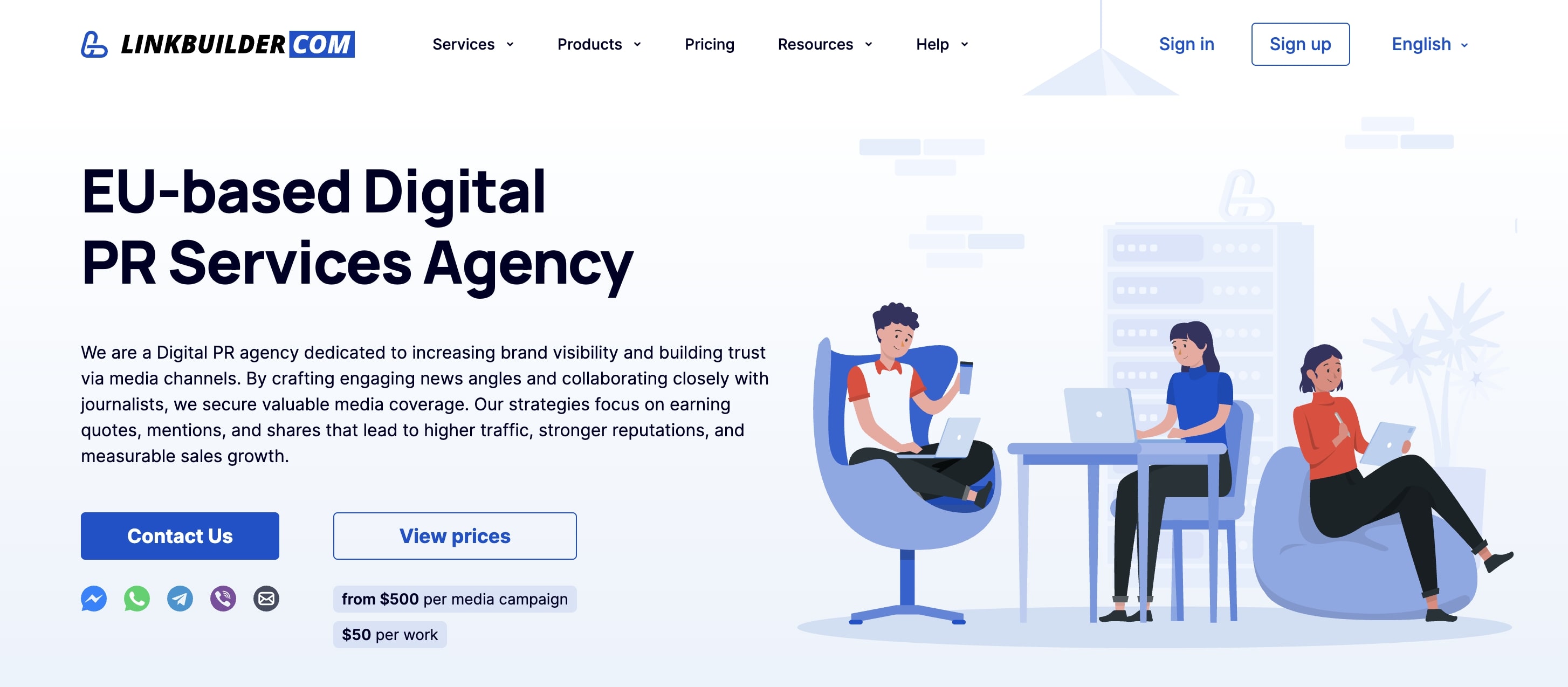
Pricing structure:
- The campaign runs on a project basis. You fund your project account with $3,000 upfront .
- Fees are deducted per successful placement – ranging from $75 to $450 , depending on the site's authority and whether a backlink is included.
- They do not offer link-by-link sales. The work is only done as a full-service campaign to ensure impact and consistency.
This model is ideal for brands looking to scale their PR backlinks through high-authority press links, without relying on paid guest posting or cold outreach.
Doing PR Link Building In-House
If you prefer full control or have the internal resources to manage the process – building your own PR link building system is absolutely possible. It's a good fit for companies with a dedicated marketing or content team who want to understand how to earn PR backlinks without intermediaries or hidden fees.
What You'll Need
To run your own backlink campaign , prepare the following:
- Team:
- A PR manager or content marketer with media outreach experience.
- An SEO specialist to track domain ratings, dofollow links, and define your KPI targets.
- A data analyst or content strategist to generate reports, visualizations, and story ideas.
- Tools:
- Monitoring tools: Google Alerts , Brand24 – to track media mentions.
- SEO platforms: Ahrefs , Semrush – to track new backlinks and referring domains.
- Outreach tools: Instantly , Pitchbox , Hunter.io – to manage journalist contact and personalized email campaigns.
Benefits of an In-House PR Link Building Strategy
- Full control: You decide what to say, how to say it, and where to publish.
- Flexibility: Your internal team can pivot quickly based on changes in your industry or media landscape.
- Cost efficiency: Once the system is in place, you're no longer paying for agency overhead–allowing for more predictable budgeting over time.
Monthly Costs (U.S. Market)
| Category | Estimated Monthly Range |
|---|---|
| PR Manager Salary | $4,000 – $7,000 |
| SEO Analyst (part-time) | $2,000 – $4,000 |
| Tools (Ahrefs, Pitchbox, etc.) | $400 – $1,200 |
| Supporting Costs (visuals, translations, editing) | $300 – $800 |
| Total Estimated Budget: | $6,700 – $13,000 |
In most cases, running PR link building in-house can be more cost-effective than outsourcing– if you already know how to get high PR backlinks and have an experienced team. But this approach comes with its own set of challenges.
Key Considerations for In-House Link Building
- Building a team is an investment. Beyond salaries, you need to factor in tools, onboarding, training, hiring time, and the cost of early trial-and-error mistakes.
- It requires constant attention. Maintaining an internal PR operation takes resources, management, and strategy. In reality, a fully in-house team often ends up costing more than hiring a seasoned backlink agency with refined systems.
That's why in-house PR link building is best suited for experienced teams with clear goals and proven workflows. For others, partnering with an agency can be a faster, more predictable, and often more affordable way to generate press links and boost brand authority.
PR Link Building Metrics and Performance Reporting
Core KPIs to Track
To measure the true impact of PR backlinks , track these performance indicators:
- Number of backlinks earned
Quantity matters–but quality (DR, relevance) matters more.
- Domain Rating (DR) of referring domains
Prioritize backlinks from sites with DR 60+ for maximum SEO benefit.
- Referral traffic
How many users visit your site directly from the link? This shows whether the content resonates and drives interest.
- Conversions / Signups / Leads
Actions taken by users coming from PR links –this is the clearest indicator of ROI.
- User engagement
Track session time, page depth, and bounce rate to gauge interest post-click.
Measurement Tools
- Google Analytics (GA4):
Tracks behavior, conversion goals, traffic sources, and UTM-tagged links.
- Ahrefs / Semrush / Serpstat:
Monitor all inbound links, domain authority, anchor text, and unlinked mentions.
- Google Search Console:
Reveals how PR links impact organic visibility: impressions, rankings, CTR.
- CRM / Web Analytics:
Measures conversions, registrations, and leads attributed to PR placements.
Calculating ROI in PR Link Building
Return on Investment (ROI) helps determine whether your backlink campaign is paying off. Here's how to approach it:
- Cost per link
Formula: Total campaign cost / Number of earned backlinks
(Include all related costs: content creation, tools, salaries.)
- Monetary value of results
- Leads × Average Customer Lifetime Value
- Or compare to equivalent paid ad spend (e.g., cost per click from Google Ads)
- ROI Formula:
(Value – Cost) / Cost × 100%
Secondary Benefits of PR Backlinks
Even when a PR link doesn't lead to an immediate sale, it often delivers long-term value:
- Brand visibility. Consistent mentions in respected outlets build audience trust.
- E-A-T signals. High-authority backlinks improve Google's perception of your site's expertise and credibility.
- Higher CTR. After media coverage, users are more likely to click your site in search results–boosting engagement and rankings.
Advanced PR Link Building Techniques and Trends
Here are three modern strategies that work across industries and company sizes:
1. Data-Driven Content and Infographics
What it is:
Original research or insights backed by data, presented through visual formats like graphs, charts, and slides. This type of content is highly linkable and easy for journalists to cite.
How to use it:
- Gather meaningful data (surveys, benchmarks, tests).
- Design strong visuals (infographics, summary slides).
- Include expert quotes or commentary.
This approach is ideal for press releases and SEO, especially when aiming to earn contextual PR backlinks.
2. Collaborative Campaigns and Co-Branded Research
What it is:
Partnering with another organization or brand on joint studies, reports, or marketing initiatives.
How to use it:
- Find a partner brand with overlapping audiences.
- Create shared assets: blog posts, research reports, webinars.
- Pitch to media outlets through both networks for extended reach and more press release links .
3. Podcast and Video PR
Podcasts and video interviews have become powerful tools for digital PR for link building. When done right, they generate high PR backlinks and build long-term visibility.
Many podcast hosts publish transcripts or show notes on their websites, often including:
- Links to the guest's site, social profiles, or research.
- Links to tools, case studies, or brands mentioned.
- Contextual anchors and citations with active PR links.
How to use this format:
- Identify relevant, niche-specific shows.
- Pitch a compelling topic and highlight your unique value.
- Prepare quotes, insights, and case studies in advance.
- After the interview, confirm whether a transcript or backlink will be included.
Video Interviews and Social Media Content
Video content and social posts can also generate SEO value:
- YouTube descriptions often include backlinks.
- Pinned comments may include links to your site or featured resources.
With the right strategy, podcasts and video appearances become a scalable source of relevant, trustworthy high PR links–backed by real human connection.
Checklist: How to Launch a PR Link Building Campaign
Here's a practical checklist to help you avoid common mistakes and build a PR backlink campaign that actually delivers results.

1. Define Your Goals and Budget
- Clarify why you need PR backlinks: Is it for SEO, brand awareness, lead generation, or establishing authority (E-E-A-T)?
- Set your budget, factoring in both internal resources and external partners.
- Define clear KPIs: number of high PR backlinks, referring domains' DR, traffic volume, and publications in top-tier media.
2. Research Relevant Media Outlets and Platforms
- Build a target media list based on relevance, authority, and audience fit.
- Identify specific journalists who cover topics related to your niche.
- Check if the outlets accept contributed content, press collaborations, or guest features–crucial for successful digital PR link building.
3. Create Content with PR Value
- Choose a compelling format: press release, data-driven report, industry insight, or infographic.
- Make sure the content includes unique data, expert commentary, or newsworthy angles.
- Structure your piece strategically–include natural anchor text and link to the most relevant page on your site to support high PR link acquisition.
4. Outreach and Distribution
- Craft personalized outreach messages: who you are, why you're reaching out, and what makes your content valuable.
- Send pitches via email, LinkedIn, or through trusted PR platforms.
- Track everything: who opened your emails, who replied, and where a follow-up is needed. This is key for a successful press link campaign.
5. Monitor Publications and Track Links
- Use tools like Google Alerts, Mention, or Ahrefs to track media mentions.
- Verify where your content was published: Is the backlink live? What's the anchor text? What's the domain authority (DR)?
- If a mention lacks a link, consider politely requesting a link addition (this is known as link reclamation).
6. Analyze Results and Report
- Compare your backlink results to your original KPIs: DR, link quantity, topical relevance.
- Review traffic spikes, user behavior, and lead conversions tied to press links.
- Calculate ROI: How much did each link cost and what did it deliver in return?
7. Optimize the Campaign
- What worked well – was it the content format, the topic, or the way it was pitched?
- What didn't – was it poor outreach, irrelevant platforms, or weak content?
- Use insights to improve your next PR backlink efforts and scale effectively.
Conclusion
PR link building is a strategic process designed to build trust, increase authority, boost SEO, and elevate your brand's online visibility through earned media. Getting high PR backlinks from trusted sources takes more than luck. It requires research, quality content, and strong journalist relationships.
Remember, high PR links aren't instant wins – they're long-term investments in your brand's credibility and search rankings.
You don't need a huge budget to start. Even a couple of strong stories can kick off a sustainable PR link strategy. Begin with focus and intention, then scale once you start seeing traction.
If you're looking to generate consistent, high-quality PR backlinks, LinkBuilder.com offers tailored services including HARO outreach, reactive PR, guest features, and full-scale digital PR link building campaigns. We work with startups and global brands alike, driving strong media coverage, backlink growth, and long-term SEO gains.








